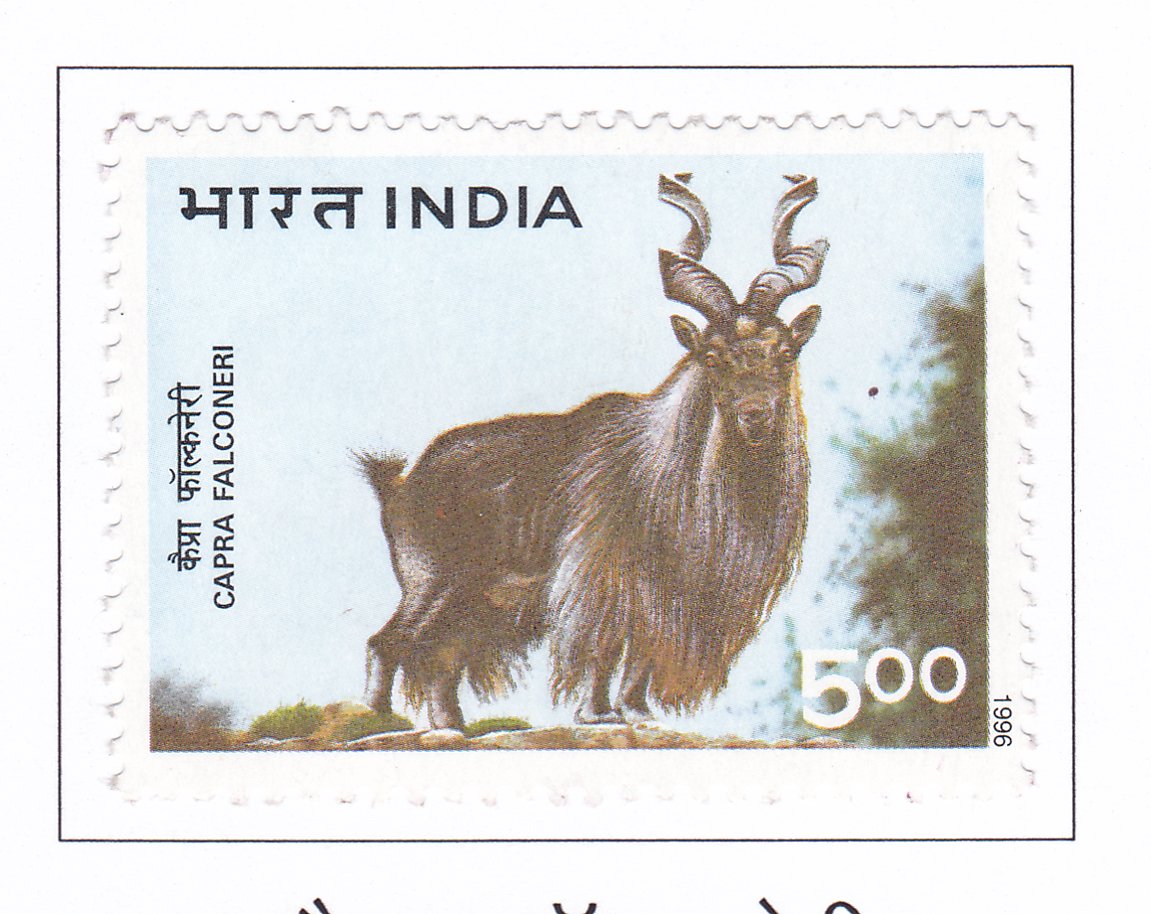Himalayan Ecology – Markhor (Capra falconeri)

Technical Data
| Stamp Set | Himalayan Ecology |
|---|---|
| Date of Issue | May 10, 1996 |
| Denomination | Rs. 5 |
| Quantity | 1,000,000 |
| Perforation | comb 13½ x 13¼ |
| Printer | Security Printing Press, Nashik |
| Watermark | No Watermark |
| Colors | Multicolor |
| Catalog Codes |
Michel IN 1502I Stamp Number IN 1562 Yvert et Tellier IN 1301G Stanley Gibbons IN 1665 |
| Themes | Animals (Fauna) | Goats | Mammals |
Table of Contents
Himalayan Ecology
The Himalayan mountain range is indeed a remarkable feature, not only for its geological and climatic significance but also for its rich biodiversity. The set of postage stamps issued by India Post to highlight Himalayan Ecology is a beautiful tribute to this unique and crucial region. Here’s a detailed description of the stamps featured in the set:
Capra falconeri (Markhor)
- Description:
- Appearance: The Markhor is known for its impressive horns, flowing beard, and a mane that extends from the neck and shoulders to the knees.
- Color: The winter coat is iron-grey, which turns short and reddish-brown in summer and grows grey with age. Females are dark fawn and about half the size of males.
- Habitat: Found in the valley of Kashmir and westwards in the Hindukush. Prefers open areas with precipitous crags and rocks.
- Behavior: The Markhor is well-adapted to its environment, keeping mainly to open spaces within forests and seldom ascending beyond the snow line.
- Miniature Sheet Background:
- Laspa Valley: The background of the miniature sheet highlights the Laspa Valley, emphasizing the Markhor’s natural habitat.
- First Day Cover:
- Bhyundar Ganga: The first day cover features the Bhyundar Ganga, which originates from the Tipra glacier at the base of Rataban and Ghouri Parbat peaks. The river traverses the Valley of Flowers and passes through temperate deciduous forests before merging with the Alaknanda at Govind Ghat.
Significance of the Stamps
The stamps not only showcase the beauty of the Himalayan flora and fauna but also emphasize the importance of conserving this delicate ecosystem. The Markhor, with its distinctive appearance and habitat, represents the rich biodiversity of the Himalayas and the need for concerted conservation efforts to protect it from destruction.
This series of stamps helps in raising awareness about the ecological significance of the Himalayas and the importance of preserving its unique flora and fauna.
